If you want to win in chess, you must come up with a good strategy. There are many different types of strategies in chess but it’s important to choose the right one for the given position.
If you are in the endgame, and you have a pawn majority on the queenside, then your strategy is to advance your pawn majority, create the passed pawn and promote it to a queen.
On the other hand, if your opponent’s king is still in the center of the board, then you should strategize a plan to open lines against the king and punish him for not castling. Therefore, the strategy you choose will depend on the nature of the position.
In this article, we will discuss some of the most important strategies in the game of chess that you can implement in your games. Without a clear winning strategy, you will make a lot of blunders in your game by moving your pieces to random squares. You want to have a clear goal at all times.
Without further ado, let’s jump right in.
Here are 10 effective chess strategies to help you win more games:
- Create and target weak pawns
- Grab space in the center and on the flanks
- Play in the center of the board
- Prioritize king safety
- Stop your opponent’s plan
- Develop your pieces quickly with tempo
- Create Passed Pawns
- Bring your least active pieces into the game
- Create weak squares around your opponent’s king
- Play up the bishop pair
Chess Strategy To Win
1. Create And Target Weak Pawns
Targeting weak pawns is a easy and straightforward winning strategy which involves using your major and minor pieces to attack your opponent’s weak pawns. This is usually done along the files with the aid of your rooks and queen. However, the real skill is to actually create the weak pawns so that they can become targets of attack.
Weak pawns can be categorized into three groups:
- isolated pawns
- backward pawn
- doubled pawn
Isolated Pawns
An isolated pawn is a pawn that cannot be protected by another pawn. You can create isolated pawns for your opponent as early as in the opening which is an effective long term winning strategy.
The following position shows an isolated d-pawn for white

Often, isolated pawns are created by making several exchanges in the center. One such example is in the Tarrasch opening after black plays c5. This could lead to pawn captures in the center which creates an isolated pawn for black.
One effective strategy in attacking isolated pawns is to trade off your opponent’s minor pieces. The more of your opponent’s pieces are removed from the board is the less defenders of the isolated pawn.
You will then use your major pieces such as your rooks to attack the isolated pawn down the file. The following position shows how black was able to get his pair of rooks along the d-file to add pressure to white’s isolated pawn.
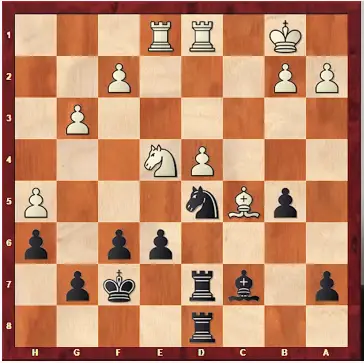
Black’s plan is to re-route the d5 knight to the f5 square which would add a 3rd attacker to the isolated d-pawn.
Why Create Isolated Pawns?
The reason why you want to create isolated pawns is that they are easier targets when compared to connected pawns.
When a pawn is isolated, there are no pawns defending it. Therefore, your opponent would have to defend it with his major or minor pieces. This is a bad thing to do, because his defenses would be tied down to the pawn, which in turn restricts the activity of his pieces.
Backward Pawns
A backward pawn is a weak pawn that usually sits on an open file where it cannot be safely advanced.
The diagram below shows a backward pawn on d6.

If black tries to advance the d6 pawn, white would capture it with his e4 pawn. Backward pawns can also be referred to as base pawns. They are fixed on a specific square and cannot be helped by a friendly pawn.
So how do you create and attack backward pawns? Well, the most effective strategy is to provoke your opponent to push one of his pawns and create the weakness. For example, in the position below, black impatiently kicked away the knight on d4 with the move c5. Though it gains a tempo, black actually created a massive weakness on the d5 square leaving him with a backward d6 pawn.
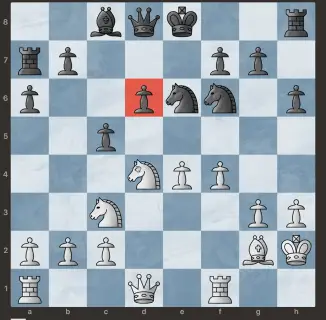
White played Nf5 on the next move to attack the backward pawn. Black’s backward pawn eventually fell and white was able to win the game.
Doubled Pawns
The last type of weak pawns on our list are the doubled pawns. Doubled pawns are static weaknesses that becomes a target in the endgame. It’s important that you create doubled pawns for your opponent because he would have a miserable time in the endgame.
Doubled pawns become a major weakness in the endgame. As a result, one winning strategy used by many grandmasters is to create doubled pawns and then go straight into the endgame where they will use them to their advantage. Therefore, if your opponent has doubled pawns, it’s usually best to trade most of your pieces, go into the endgame and gobble up his weak pawns.
Material is equal. But Black’s doubled pawns give white serious winning chances.

2. Grab Space In The Center And On The Flanks
One of the best strategies to win in chess is to simply grab more space. In fact, many grandmasters love implementing this strategy in their games as it yields great results.
Space in chess, refers to the amount of squares your pieces control. Space is created by advancing your pawns up the board, either in the center or on the flanks.
Once you’ve created enough space, you will have a lot of room for your pieces to manouvre to good squares. Your opponent’s pieces will be crowded and less active, almost as if they are suffocating. This puts his pieces in a passive position where he simply has to wait.
In general, the player with more space usually has better winning chances.
In most cases, the side with more space can take all the time in the world to formulate a plan and organize his pieces to their most natural squares. Then when the time is right, he will strike at his opponent. In other words, he doesn’t have to rush the attack because his opponent’s pieces can’t get active.
In the position below, black did not make the best moves in the opening and has allowed white to gain a large spatial advantage in the center.

White is able to develop his pieces freely to their most natural squares. Meanwhile, black’s two bishops are sitting very passively on b7 and e7. It’s hard for black to break through in the center and equalize the position. Black will have a miserable game due to lack of space.
3. Play In The Center Of The Board
When you are looking for a plan in the middlegame or even the opening, the first thing you should focus on is how you can play in the center. Out of all the strategies in chess, playing in the center of the board is the most powerful strategy you could take.
To play in the center, you typically want to push your central pawns up the board. Your d and e pawns are most effective because they open up lines for your bishops and they help to control key squares in the position.
Playing in the center doesn’t just mean pushing your e and d pawns. Your other pieces such as the knights and bishops can participate in play in the center. This could mean landing your knight on a central outpost, or placing your rooks along the central files.
Even with hypermodern openings, there will come a point where you will have to play in the center of the board which typically involves pawn breaks. For example, in the king’s indian defense, black gives white play in the center, but later breaks in the center with a timely c5 or e5.
Black plays in the center with the move e5!

Playing In The Center Vs Playing On The Flanks
Playing on the flanks can be an effective strategy if you are looking to gain space, open lines and attack the castled king. However, this is still not as effective as playing in the center of the board.
Playing in the center activates most of your forces as opposed to a flank attack. In fact, there is a well known principle which states that if your opponent is playing on the flank, then you should play in the center. Let’s look at an example.
In the position below, white played pawn to h4 trying to pry open the kingside. Black should react with the principled d5 pawn break. Black ignores whatever white is doing on the kingside and plays directly in the center to try and equalize the position.
Black plays in the center to counter white’s kingside attack on the flank.

4. Prioritize King Safety
The goal of chess is to checkmate the king. This makes king safety the number #1 priority in the game of chess. The best strategy in keeping your king safe is to simply castle when given the opportunity.
Castling is a special move that involves the king and rook. Without castling, the king would be exposed and vulnerable to attacks from the opposing side. See more on castling here
Castling strategy is simple. Move the king two squares to the rook and jump the rook over beside the king. Castling allows the king to stay safely tucked in the corner away from all the action. It also helps to activate and connect your rooks.
In the position below, one of black’s strategy is to open up the center with the move pawn d5. It would be risky if the white king is still in the center during this pawn break. As a result, White should castle kingside to safeguard his king.

What are the dangers of leaving your king in the center of the board?
Not castling in chess can often lead to your king being stuck in the center of the board. Your rooks will be discoordinated and you will have a hard time defending the position.
Your opponent can open up the center and attack the uncastled king. He may also open up the e-file and use his major pieces to attack the uncastled king.
All these threats can be avoided by simply castling early in the opening. To do this, you need to develop your kingside pieces first such as the king’s bishop and the knight. This makes it easier to castle kingside early in the opening.
If you are not an experienced players, then you should always prioritize king safety first.
5. Stop Your Opponent’s Plan
Too often I see chess players make the mistake of just focusing on their own plans that they forget what their opponent is trying to do. In fact, most chess players lose their games because they don’t pay attention to their opponent’s threats.
In order to win a lot more games, you have to learn not to lose. And to do this, you must always watch out for your opponent’s plan and stop them in their tracks. When preventing your opponent’s plans, you should ask yourself these 3 things:
- What is my opponent’s plan
- Will this plan create any real threats
- If so, how can I stop him from carrying out his plan.
Let’s dive into an example. This game is between Alexandar Alekhine (white) vs Jose Capablanca (black). Black just played his knight back to d8.
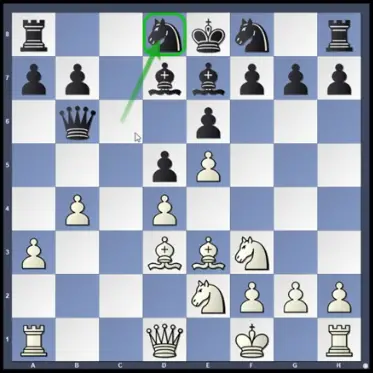
Whenever your opponent makes such move with his knight, it’s always some deep strategic plan that he has in store. Therefore you should ask yourself what is your opponent’s plan(s) and is it a real threat.
After carefully studying the position, you will notice that the reason black moved his knight is to prepare the bishop. Black wants to trade off his light squared bishop for white’s active bishop on d3 by playing the move Bb5.
This is actually a good plan. White see the plan and played the move knight to c3, which prevents black from going Bb5.

Example#2:
A couple of moves were played out, and here we see the same theme again. Black is poised to advance his g pawn to the g5 square which will create attacking chances for black and give him a significant spatial advantage on the king side. There are 2 ways white can prevent this, either with Qd2 or pawn to h4.

In the game, Qd2 was played with the same idea of stopping g5. The other merit of playing Qd2 is that white gets to connect his rooks along the 1st rank.
Black tried hard to execute his idea with moves such as h6 and Nh7, but in the end white was able to advance his h pawn and shut down black’s counter play as show in the position below.

6. Develop Your Pieces Quickly With Tempo
Acitivity of the pieces will determine who has the initiative. The player with the initiative is usually the one with the attacking chances.
If your pieces are underdeveloped, your opponent may use that to his advantage by attacking you straight out of the opening.
The best way to develop your pieces quickly is with tempo. Tempo in chess is a “turn” or single move. When a player achieves a desired result in one fewer move, the player ‘gains a tempo’.
You usually gain tempo by attacking your opponent’s piece while developing at the same time. Your opponent would have to retreat his pieces, leaving you with the next move. One common example is in the Scandinavian defense after 1.e4 d5 2.exd5 Qxd5 3.Nc3
White gets a tempo off the queen with the move knight c3. White will have the next move after the queen retreats.
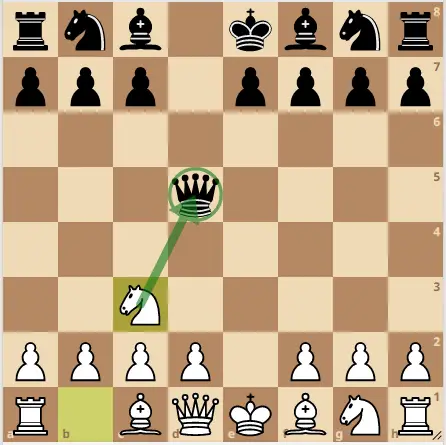
7. Create Passed Pawns
A passed pawn is often the deciding factor of who wins or loses the game. Passed pawns are pawns that no enemy pawn can stop from queening. You usually win the game once you promote your pawn to a queen. Therefore it’s important that you try to create passed pawns and advance them up the board.
A passed pawn can be created by advancing your pawns forward and making the right exchanges either in the center or on the flanks. Passed pawns on the flanks can be dangerous to handle. The best piece to blockade a passed pawn is with your knight, but you can do it with any other piece as well.
Black can push his outside h pawn and promote to a queen.

The white king cannot get to the outside pawn in time. Black wins the game.
8. Bring Your Least Active Pieces Into The Game
The principle of the least active piece simply states that you should look for a piece that is not doing anything much and bring it into the game.
Bringing your least active piece is a good winning strategy to mount an attack on your opponent. If you don’t have enough active pieces involved in the game, then you won’t have chances to launch a successful attack.
Simply bringing your rooks onto open files, or developing your knights off the back rank are effective ways you can get your least active pieces involved in the game.
9. Create Weak Squares Around Your Opponent’s King
Creating weak squares around your opponent’s king will leave him vulnerable to all sorts of attacks. In positions where your opponent’s bishop is fianchettoed kingside, one common strategy is to get rid of that bishop which would leave a lot of holes and weak squares around the king. These weaknesses can then be attacked by your own pieces, such as your bishop.
One example of dark squared weaknesses can be found in the following position. White got rid of Black’s fianchettoed bishop on g7 which was controlling the dark squares.
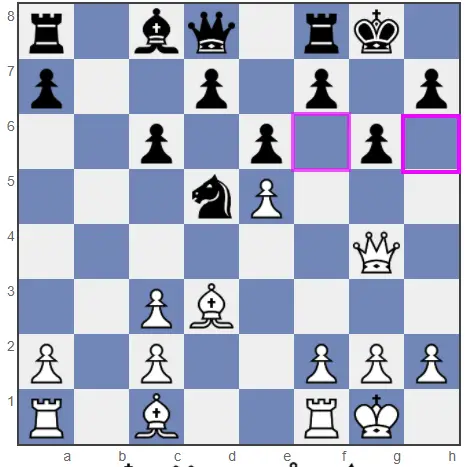
Black has a lot of dark squared weaknesses around his king. White can use his bishop to attack these weaknesses with a move like Bh6. This can lead to a mating net, so black should be careful in these types of positions.
10. Play Up The Bishop Pair
The bishop pair is highly treasured by grandmasters. They are a powerful set of piece to have especially in open positions.
They are able to control the long diagonals and attack pieces from a far. When in pair, they can even be more powerful than two rooks combined.
Due to the effectiveness of the two bishops, it’s recommended that you retain them as long as possible by avoid trading them with your opponent’s pieces. You should use your pawns to open up the position in order to get your bishop pair working at their full potential.
Black is better due to the bishop pair
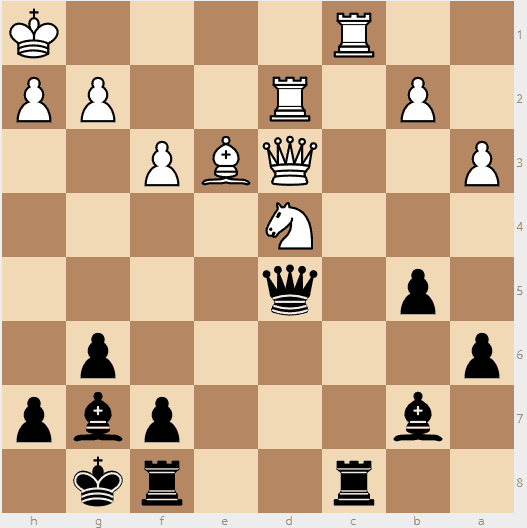
Final Verdict
These are the 10 most effective strategies to win chess. Choosing which strategy to use will depend on the nature of the position. Therefore, it’s important that you study and assess the position in order to come up with the most objective strategy.
Hoped you learn a thing or two from these 10 winning strategies. Have fun applying them in your games 🙂


